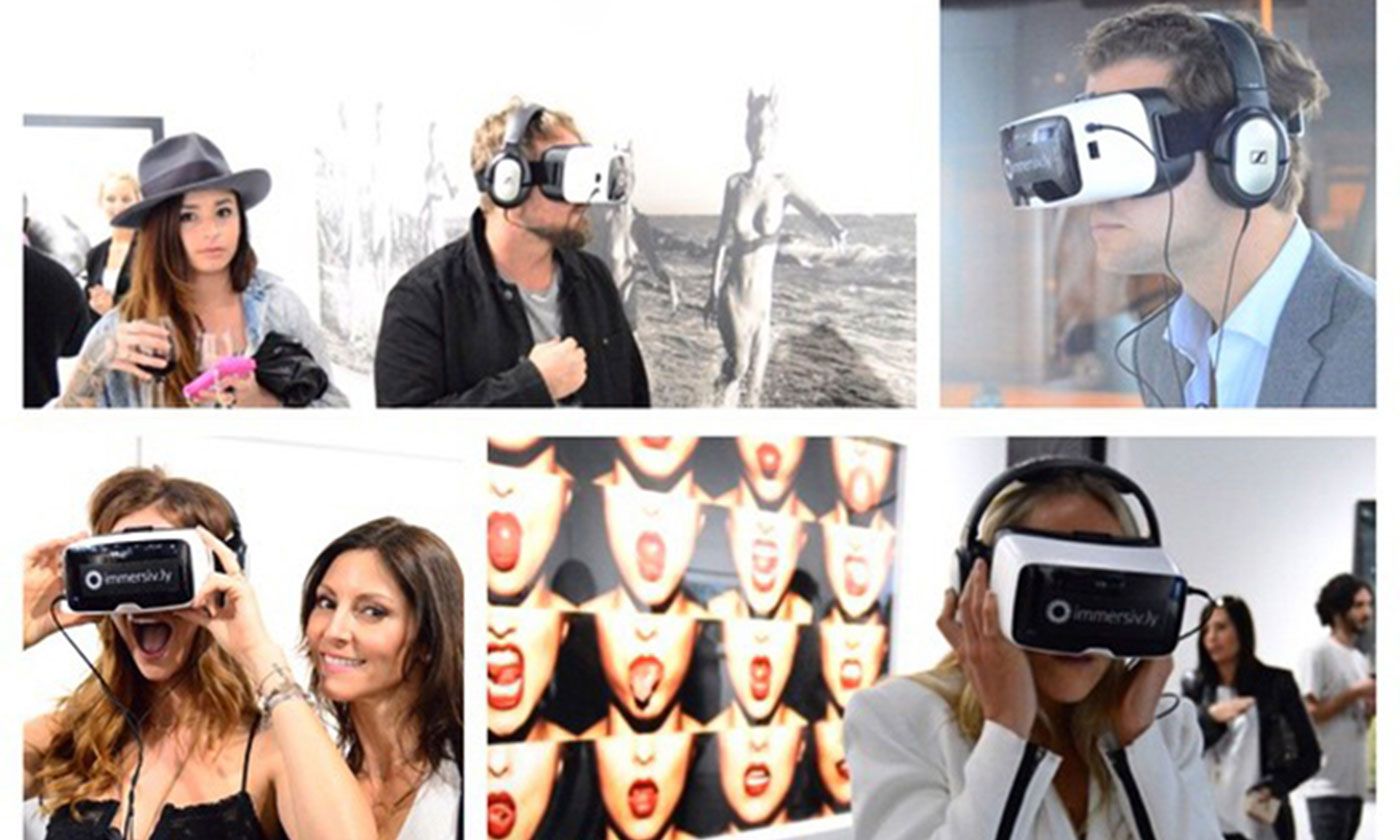When Gretchen Andrew launched the first art show opening in VR in Los Angeles in February 2015, it was by way of an iPhone app and lenses-only Zeiss goggles. An approach rendered obsolete by integrated headset development, which culminated in the launch earlier this year of the Apple Vision Pro mixed reality headset
As Art Decoded is written from my perspective as an artist inside the digital art world we’ve decided to invite guest writers to share new vantage points and thoughts. I’ve invited Jasper Spires to share his thoughts on the lifespan of digital art. Gretchen Andrew
In the act of observing a work of art, the last thing that anyone mentions is the frame. There is always the canvas, the sculpture, the liquid-crystal display (LCD) screen, but rarely does anyone mention the means by which the art is accessed, or how it is contained. It is a justified response to be sure; the artists themselves would not be best pleased if the thin strips of plastic and glass sheeting that covers their work received more attention than the lifetime of craft on display. Traditionally this has always been the case. But it is a special characteristic of digital art that the means of presentation, the television monitor or mobile phone touchscreen, has become a limiting factor to its experience.
Technological development has fuelled ever greater possibilities for art production in the last decade. From the development of sophisticated and accessible 3D rendering software, virtual reality (VR) and augmented reality (AR), and more widespread computer literacy amongst future creatives; the sheer volume of digital art being made today could no doubt fill the Louvre several times over in hard-drive storage alone. However, like most technology-dependent phenomena, there is a little discussed characteristic of the genre that has serious implications for its future: its essential technological obsolescence.
If the 21st century is defined by the ever-strident march of technological progress, then the unspoken supplement to this development are the graveyards of now useless computer technology. The oft-quoted Moore’s law has left the vast majority of digital creative endeavours wholly inaccessible. Take, for instance, the demise of Flash Player, which has rendered thousands of multimedia projects, websites, and online games unplayable since it lost support from its parent company, Adobe. Perhaps more importantly, consider how little interest there is in archiving these projects. Whilst the internet has already produced a fervent community of users cataloguing such lost media, vast swathes of culture have simply left it behind.
What distinguishes these creations from traditional forms of art is the means by which they are encountered, their lack of corporeality, their transience. Though there are civilisations' worth of destroyed literature and art that either burned, was shredded or flooded out of existence, changes in its environment have typically taken place far more slowly than in cyberspace. Crucially, the means by which we experience these works has not changed. If language persists, books will always be read. So long as we keep our eyes, canvas will be gazed upon. But when access to digital art depends completely on rapidly evolving software, the works of a whole generation of creatives will be harder to preserve. If computers are already being treated as pseudo-organs attached to our bodies, we could all too easily lose this alternative form of “sight” as technology progresses.
It’s of particular concern for VR experiences; where little worlds have been formed for gallery visitors to explore. Sure, for now they run just fine. The novelty of slipping on a clunky headset and praying that you haven’t been genetically predisposed to visor motion-sickness might attract eyeballs for the minute, but it is a huge amount of work that could be lost once the updates start rolling around. How much virtual work has already been made for Oculus headsets over the past decade while Apple Vision Pro was quietly lurking around the corner before being let out into the world earlier this month?
Perhaps for digital art, this will actually increase the value of certain works. I can already see collectors at auction fawning over old computers, whose drives store only a single .jpeg that cannot be read on cutting-edge tech, in a delightfully dystopian scene. It could even be a form of sculpture, standing alongside the digital piece. But more broadly, I think that culture is experiencing a closing off of accessibility. Obsolescence not only makes older works harder to operate, but puts the latest experience in the hands of those only with the most computing power. Try running most virtual galleries; even on a powerful laptop with strong broadband, the fans start chugging, the keyboard gets hot, the frame-rate drops to a jagged stutter. To get at the artworks themselves, there’s a prerequisite in the number of transistors you need firing away, and this is not always how experiencing art has been.
Even as collectors squirrel away vast quantities of classic work into temperature-controlled warehouses and only a fraction remains accessible to the public, preserving these images and distributing them has not been a problem.
It is collectors of digital art that will have to watch out; the commodity could have a built-in sell-by date. Like everything in the supposed permanence of cyberspace; artwork has a shorter lifespan than we might expect.

